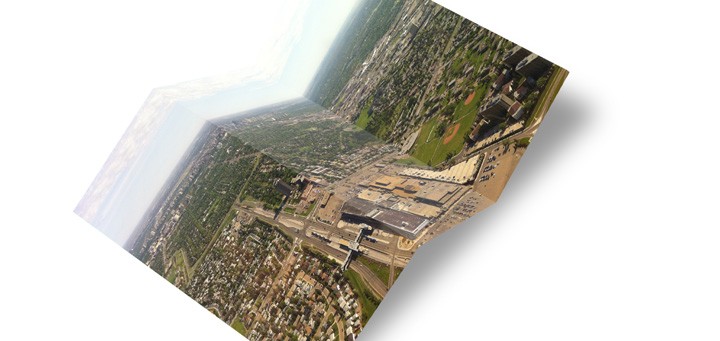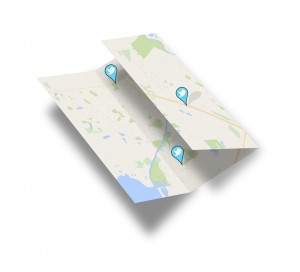
Conversations
Should MLAs live in their Ridings?: THE FLEXIBLE BOUNDARIES OF POLITICAL REPRESENTATION
BY TRACEY L. ANDERSON
December, 2018
Updated January 3, 2019, see new information at bottom of article.
Are the Internet and social media changing voters’ desire for MLAs to live in the ridings they represent?
As the Internet and social media have taken on larger roles in our lives, the ways in which we understand community and connection have started changing. These changes impact all aspects of our lives, including politics. Voters often debate whether it’s necessary for our provincially elected representatives to live in the ridings they represent. To explore this question, it’s important to take an in-depth look at the role of MLAs and to examine what community, connection and political representation mean to us today.
Electoral Boundaries
In Alberta, the provincial legislature has 87 electoral districts called constituencies. Each constituency is represented by an elected member of the Legislative Assembly (MLA) whose job it is to represent, in government, the interests of the community where he or she was elected.
Constituency boundaries in Alberta are set by the Electoral Boundaries Commission. According to The Citizen’s Guide to the Alberta Legislature, the commission draws the boundaries “on the basis of population but also considers common community interests, the geographical area, natural boundaries such as rivers, political boundaries such as county lines and city limits and other factors.” Although all those factors are taken into account when determining electoral boundaries, the factor that gets the attention of most voters is that of common community interests. Because of this, members of the public generally seem to believe that in order for an MLA to accurately understand and, in turn, represent a riding, he or she must live there. St. Albert MLA and Minister of Service Alberta Stephen Khan is an example of an MLA who is currently representing a riding in which he lives and has lived for most of his life. (Minister/MLA Khan was approached for this article but declined to comment.)
Representation from Inside
For those people who want their MLA to live in their riding, which includes everyone who agreed to be interviewed for this article, the main argument boils down to the belief that an MLA who resides outside his or her riding will lack an understanding of the area, the issues and the people.
Janice King is a 63-year-old hair salon owner who lives in Edmonton-Whitemud—the riding currently represented by MLA/Minister of Health Stephen Mandel, who does not live there. She says that her willingness to vote for a candidate is definitely influenced by whether or not that candidate lives in her riding. If the candidate doesn’t, she says, “I wouldn’t vote for him because he doesn’t have our best interests at heart. He doesn’t know how our community functions.” (Minister/MLA Mandel was approached for this article but declined to comment.)
Dana Popadynetz, a 30-year-old embryologist who lives in St. Albert, agrees with King but takes it a step further saying, “I would even go as far as to say that if a candidate was running in a constituency in which they are not a resident, they are more likely to be of the personality that they just want to be a politician as opposed to being a strong voice for the people.”
Another person who generally agrees with the idea that MLAs should live where they represent is Brian King, a 70-year-old marketing manager. When interviewed, he asked this question that many voters ask: “If he doesn’t live here, how can he represent me?” King is, however, more accepting of Minister/MLA Mandel as the representative for his Edmonton-Whitemud riding because he always respected Mandel as Edmonton’s mayor and calls him “an honest politician, which is a rarity.”
Dr. Steve Patten, Associate Professor in the department of political science at the University of Alberta who has written about the connections between politics, social media and the Internet and about the meaning of political representation, says Mandel is an unusual case. He’s a star candidate from outside the riding who, because he was the mayor for the whole city, could realistically represent any Edmonton constituency. Patten also says that whether or not a candidate from outside the riding could provide adequate representation depends in part on why that candidate is running from outside. For example, perhaps the candidate used to live in the riding, but the boundaries changed and the MLA’s home is outside the new boundary. This arbitrary change to a political boundary would not change the person’s understanding of the community in any way.
Representation from Outside
The arbitrariness of political boundaries drawn by external sources gives rise to the argument that living in the riding is not very important to how well an MLA can represent constituents. Patten says that “A constituency is an invention.” Attempts are made to encompass a related community—where a group of people shop, work and get their news—but sometimes it’s hard to ensure this, and sometimes the resulting ridings are odd. His comment might be applied to the riding of Spruce Grove-St. Albert, where Doug Horner is currently the MLA. Regardless of whether he lives in St. Albert or in Spruce Grove, he would technically not live in one of the two larger communities that comprise his riding. This does not necessarily mean he can’t represent that portion of his riding.
Patten also says that the role of an MLA goes beyond representing the interests of the riding. The job also involves representing the party that the MLA is part of. When many people vote, they are not voting for the specific MLA; they are voting, instead, for the party and/or the leader they want to become the premier. In that case, the candidate’s residency is less important than his or her party affiliation.
Kevin Malinowski, a 50-year-old St. Albert resident in information technology, sees both sides of the issue of who or what MLAs represent. “The question of representing your riding, to me, is a real fallacy. Our MLAs do not represent us; they represent themselves…. If I am electing a member of the party I want to be in power in the Alberta Legislature then, no, it does not matter if that person lives in the riding. However, if I am voting for a person to represent me (where my opinions should matter) then… it is my preference that my MLA does live in my community.”
Another key role of MLAs is to decide what is best for the province as a whole, which Patten explains requires them to “rise above local issues and initiatives for the good of all.” Citizens also want an MLA who is available to help them interact with the government when they have problems, to act as a sort of ombudsman. Patten suggests that when voters take into account the many roles of our legislative representatives, they should ask themselves whether they want only “someone in the constituency or someone who is incredibly thoughtful” and who will use their judgment when they vote in the house. Given the complexity of the MLA roles, he thinks it would be “foolish to say only a person who lives here could do a good job.”
Fostering Connection
Dr. Patten says an MLA from outside the riding can actively develop connections to and an understanding of the constituency by working hard and making an effort; where a politician lives doesn’t matter as much as doing the work. Some consider MLA Thomas Lukaszuk an example of someone who makes that type of effort. He represents Edmonton-Castledowns but lives here in St. Albert. According to his Legislative Assembly biography page, for example, he has worked to interact with the community as a volunteer with the Castle Downs Recreational Society. (MLA Lukaszuk was approached for this article but declined to comment.)
Dana Popadynetz, who plans to run for St. Albert City Council in 2017, says, “If the MLA did not reside in the constituency, regular town hall meets and door knocking would be an appropriate method to stay physically connected with your constituents.” Brian King suggests that MLAs from outside could establish and support that connection by asking for input from members of the constituency about their concerns. To enable people to trust the MLA, he says it’s important that those concerns “shouldn’t fall on deaf ears.” Brian’s wife, Janice, says that an MLA from outside needs to be accessible and available to constituents. She doesn’t believe her MLA in Edmonton-Whitemud, Stephen Mandel, has lived up to that requirement. “We haven’t heard a damn thing [from him] since the election.”
Connection, Community and Representation in the Information Age
In the information age, the Internet and social media are changing how we define community and connection. Community is no longer determined only by physical boundaries and proximity. Connection is no longer determined only by the ability to be in the same room or even to hear another person’s voice. These changing definitions apply to politics as much as to any other realm.
As The Citizen’s Guide to the Alberta Legislature points out, “MLAs represent their constituents, and to represent means, above all, to communicate.” In effect, MLAs are in the middle of a two-way communication loop. Constituents communicate with their representative, who is responsible for communicating constituents’ ideas to members of the government, such as other MLAs, committees and ministries. Afterwards, the MLA is responsible for sharing the results of the government communication with constituents.
With the increased speed of Internet communication, citizens’ expectations of their MLAs’ communication (and therefore representation) are increasing. New technologies are making communication from constituents to their representatives faster and more frequent, so constituents who reach out to MLAs via email and on social media expect that same speed in a response. If they don’t get it, they may call their MLAs out publicly on Twitter or Facebook. Brian King believes that access now is so much simpler than with “snail mail” or the phone. “Now that I have email, I can create a major impact in a short period of time.”
Dr. Patten believes that Internet and social media have not changed politicians’ connections to their constituents as much as the politicians believe it has. He says the number of emails received rather than letters may change how the office operates, but Tw itter and Facebook are often used by politicians in a way that is not interactive. Instead they use it to broadcast a message rather than to engage with the public. Janice King tends to agree and is skeptical of the level of engagement between politicians and the people on these media. She says, “I don’t think they’re listening, but they want us to think they are.” For this reason, new technologies have not changed how she connects with her MLA. “I’m the type of person who prefers face-to-face rather than social media [which] never comes across the same way.”
itter and Facebook are often used by politicians in a way that is not interactive. Instead they use it to broadcast a message rather than to engage with the public. Janice King tends to agree and is skeptical of the level of engagement between politicians and the people on these media. She says, “I don’t think they’re listening, but they want us to think they are.” For this reason, new technologies have not changed how she connects with her MLA. “I’m the type of person who prefers face-to-face rather than social media [which] never comes across the same way.”
Who politicians engage with when they use communication technology is another issue. Dr. Patten explains that most citizens who use these tools are already politically engaged but that “The average person doesn’t want to see a politician [on social media]; therefore, there is no difference in their expectations [of MLA engagement] except when they need something.” He says that, additionally, many politicians’ Facebook or Twitter followers may not even live in the ridings they represent, which may create “false representation” in which the MLA believes he or she is getting feedback from the riding, but that feedback comes from elsewhere.
Voting Impact
While citizens’ expectations of MLAs are changing with the use of interactive technologies, it remains to be seen whether this shift translates into a greater willingness to accept and vote for an MLA who does not live in the riding because the issue has not been studied. Dr. Patten says, “People who are more connected [to the Internet] think of community differently. Where you live isn’t defining community as much now.” This is especially true of younger people who are more mobile and “less connected to geography.”
For these reasons, perhaps citizens’ willingness to vote for a non-resident MLA will grow in the future. For now, voters continue to weigh various factors when they determine who to vote for—and it seems that most people still want their MLA to represent them mainly through living in the same riding, despite some compelling arguments that other factors and roles are equally important. t8n
Modern communication […] and the increasing demand for governments to provide more and better services have transformed our MLAs’ relationship to us and radically changed the nature of their jobs. Today we are more aware of the decisions our MLAs are making, and we want greater involvement in that decision-making. We want to tell them what we think, and we want them to listen to us.
-—The Citizen’s Guide to the Alberta Legislature,
“You and Your MLA”
The Twitter Effect
I think Twitter, in particular, has become a lifeline to our politicians and really affords the ability for them to stay connected to their voter base. [It] allows open, frank and extremely concise debate—it almost forces a politician to be apolitical in their answers as 140 characters doesn’t permit a lot of spin.
-—Dana Popadynetz, St. Albert
2019 Election Updates: (updated January 3, 2019)
T8N Magazine has posed the question to each of the three candidates running in St.Albert. We have not yet posed it to those running in the new Morinville – St.Albert Riding. The results are as follows:
Cam Jefferies, Alberta Green Party – Has not responded to one twitter inquiry. No other forms of contact are yet available.
Marie Renaud, NDP – Did not respond to two T8N twitter inquiries and one email, but did respond to the question on a local webcast, TV7.ca . The response comes at roughly 2:40 in the video.
https://www.youtube.com/watch?v=pWVNbPFTtCk#action=share
Jeff Wedman, UCP, responded as follows:
“Yes, I live in the St Albert riding, we live in old Braeside.Personally, I think it is important that you live in the community you want to represent. I don’t think you can truly get the feel for a place unless you live there.There will be exceptions within reason depending on the specific boundaries. I think someone who lives in Erin Ridge would be just as capable of representing St Albert as someone who lives across the street in Inglewood.This is an advantage urban ridings have over rural ones, the urban ones tend to be more homogeneous in their concerns and issues because of the greater density. For our sister riding of Morinville/ St Albert it is more challenging because of the several distinct communities within the constituency boundaries.”
2015 Election information – Stay Connected
Here’s how to stay connected with the MLAs who have links to St. Albert.
Stephen Khan, MLA for St. Albert & Minister of Service Alberta
email: [email protected]
website: khan.mypcmla.ca
Facebook: facebook.com/StephenKhanPC
Twitter: @StephenKhanMLA
Doug Horner, MLA for Spruce Grove-St. Albert
email: [email protected]
website: horner.mypcmla.ca
Facebook: facebook.com/DougHornerForAlberta
Twitter: @DougHornerMLA
Thomas Lukaszuk, MLA for Edmonton-Castledowns
email: [email protected]
website: lukaszuk.mypcmla.ca
Facebook: facebook.com/thomaslukaszuk
Twitter: @LukaszukMLA













